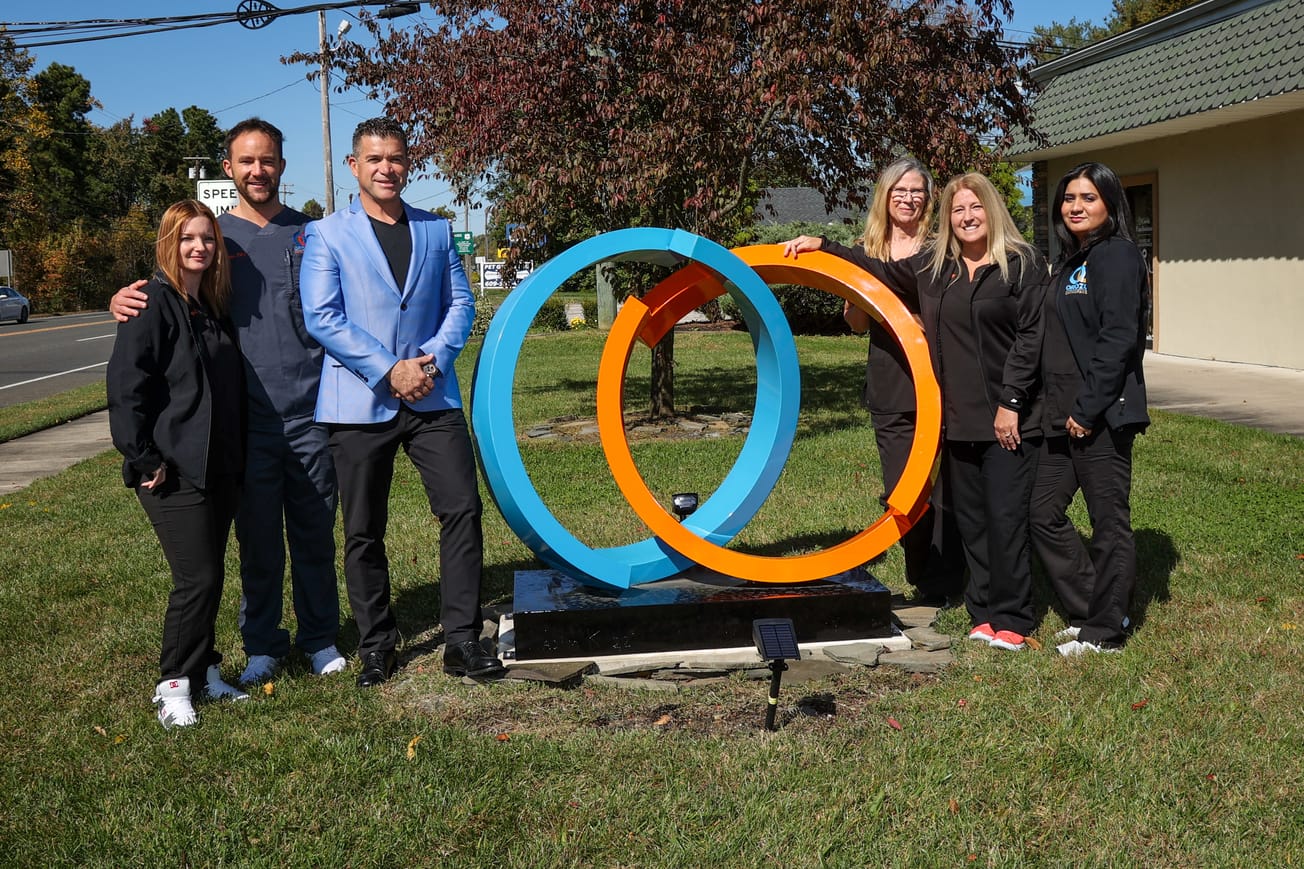We should all make fitness a part of our lives. So why aren't more of us doing it? Tips on how to break the excuses.
If the word “exercise” sends shivers up your spine, you are not alone. Fewer than one in four Americans get enough regular exercise.
It has been said that “sitting is the new smoking.” In other words, a sedentary lifestyle can be just as harmful to you as smoking cigarettes. That is a sobering thought.
Given all we know about the amazing benefits of physical activity, why aren’t more of us doing it? “Lack of time” is the usual excuse. However, a recent survey from the Centers for Disease Control and Prevention disputes this argument. They found that the average adult in the U.S. spends about three hours on screens and two hours on other leisure activities – a whopping 5 hours a day! Turns out, we do have time for exercise. We tend to make time for what is important to us.
“I can’t afford it” is another reason people give for not being active. However, there are various ways to incorporate fitness into your life that are either free or very affordable. Bicycling, walking, and jogging will not cost you a dime and have the added benefit of getting you outdoors.
“I hate exercise” is something else you will hear. Seriously? There are countless ways to get fit. That is why it is essential to try different options and find the activities that interest you. If you don’t like running, don’t run. You can also make fitness social by walking with a friend or playing a sport, such as pickle ball. While you may not “love” exercise, you must appreciate its many benefits. Who does not want to feel stronger, more energetic, leaner, and more confident? Find some way to move your body and do it - end of story.
Also, it might help change your language. Instead of “exercise,” say “movement” or “physical activity.” Sometimes, just changing how you view it can make a difference. My husband calls it “training.” I asked him once what he is training for, and he said, “life.” From the time we met in a gym, fitness has been a part of our lives. We work out in our home gym together several days a week along with our kids. We have made it a family activity and instilled the value of physical fitness in our family.
So, bottom line, it comes down to motivation. Here is the usual scenario – your jeans fit too tight, you feel sluggish and uncomfortable, so you decide you will finally do it this time. You go all it – join a gym, start jogging, take classes. A few weeks pass, and you miss a workout, then another, and after a few months, you stop altogether. Studies show that about 75% of people quit their workout program before reaching their goals. One of the main issues is that people do not see results immediately. However, consider this: it did not take you three months to get out of shape or gain 30 pounds; why would you expect to reverse that in three months? Think of it this way. It might take you ten months, even a year, to reach your ideal weight, but that year will go by anyway, so what will have changed at the end of it? The key is consistency. Commit to a realistic schedule and show up. Results are subtle, but they will happen if you keep at it.
While the guidelines recommend at least 150 (2.5 hours) minutes of exercise per week and strength training twice a week, a new report shows a little goes a long way. According to a study of movement and mortality published in JAMA Internal Medicine, if most of us started walking for an extra 10 minutes a day, we could prevent more than 111,000 deaths every year. Even a little additional physical activity by each of us could potentially stave off hundreds of thousands of premature deaths over the coming years.
We also have more options than ever before. Since the pandemic began, we have learned to enjoy virtual programs that we had never needed in the past. We have had the opportunity to try new apps, virtual trainers, coaches, and online workouts – live and recorded. We have found new paths to stay in shape.
That is good news if you want to begin and maintain a fitness program from the comfort and privacy of your own home. There are programs for beginners, intermediate and advanced participants. You can find weight training classes, cardio, low-impact, dance, boxing, yoga, and home cycling and treadmill classes. The list continues to grow. The demand for virtual fitness has led to tremendous options, but now some people are headed back to the gym. It is the best of both worlds. It is called hybrid fitness, and most experts say it is here to stay. We can work out or take a class at the gym in addition to our virtual classes or home fitness programs. It is a modern lifestyle that has opened up an entirely new fitness world.
Let’s face it - we have had to work for anything we value in our lives, whether it is our family, education, our home, or our career. Fitness is no different. It is not an option; it is a necessity. It does require commitment, but the rewards outweigh the effort. I have never finished a workout and said, “I wish I didn’t do that!” You will feel better, you will look better, and you will be better. As my husband and I always say, if you do it, “It can’t not work!”
SIDEBAR
Just Start: Steps to Begin a Fitness Routine from The Mayo Clinic
- Know Your Why and Put it on paper. A written plan makes success more attainable. Assess your fitness level and consider your goals. Do you want to lose weight? Do you want to reduce your medications? Play with your kids or grandkids? What will keep you motivated?
- Create a Balanced Routine: Get at least 150 minutes of moderate or 75 minutes of vigorous aerobic activity each week. Do strength training exercises for all major muscle groups at least twice a week.
- Start Easy and Progress Slowly: If you have an injury or medical condition, talk with a fitness professional to help you design a program to fit your needs. Be sure to speak with your doctor before beginning a program.
- Build Activity Into Your Daily Routine: Schedule exercise just like you would any other appointment. Plan to watch your favorite show on the treadmill or take a walk on your lunch break.
- Allow time for recovery: Many people who start a workout program exercise too long or intensely and give up when they are sore. Plan time between sessions to rest or recover.
Robin Stoloff has been a health reporter in southern New Jersey since 1987. A former TV reporter for the local NBC station, she now hosts her own radio show on Lite Rock 96.9 at 10 am on Sundays and her own podcast, Living Well with Robin Stoloff, which you can watch on her YouTube channel or website, livingwellwithrobinstoloff.com. She is a former fitness competitor and certified fitness instructor.









